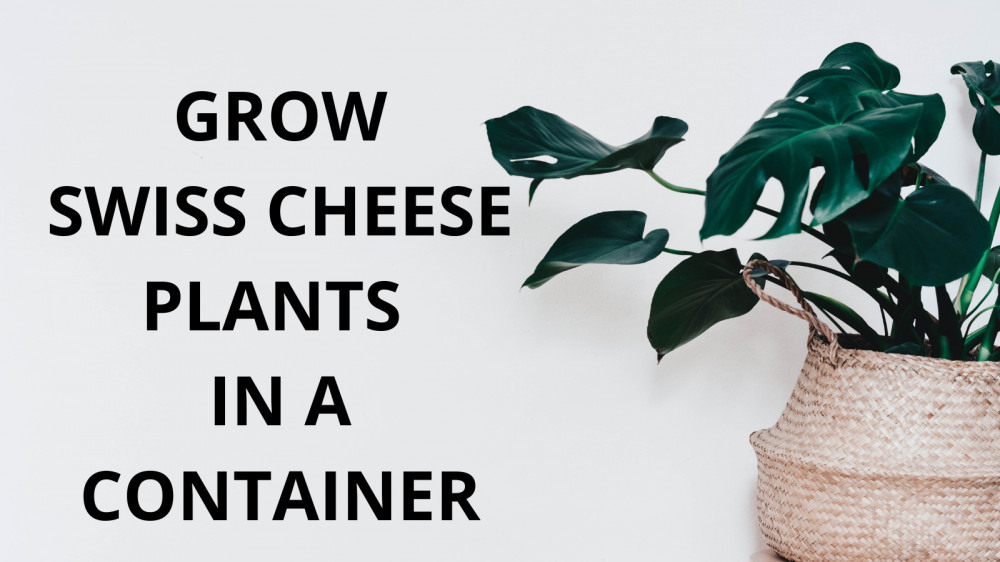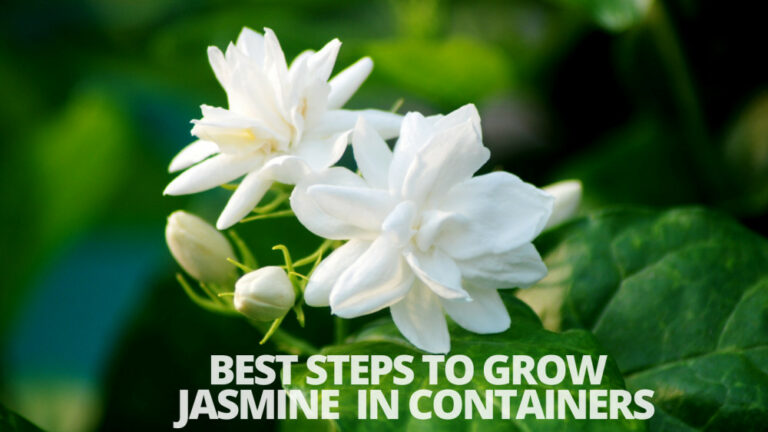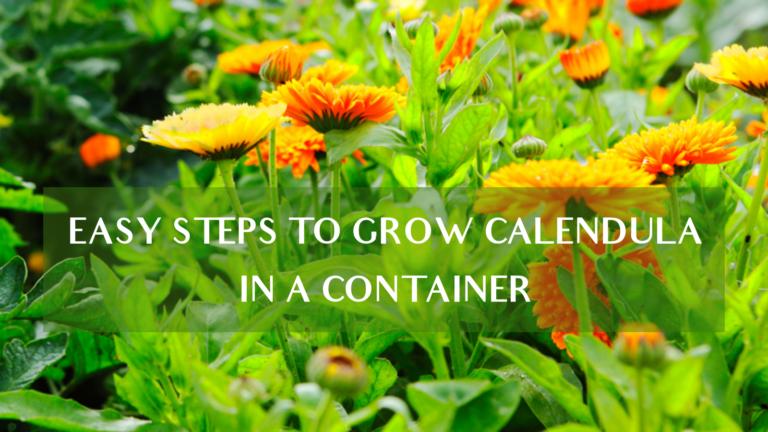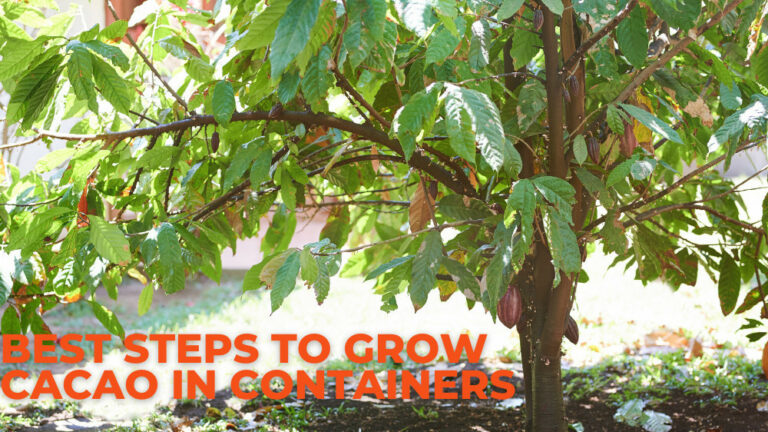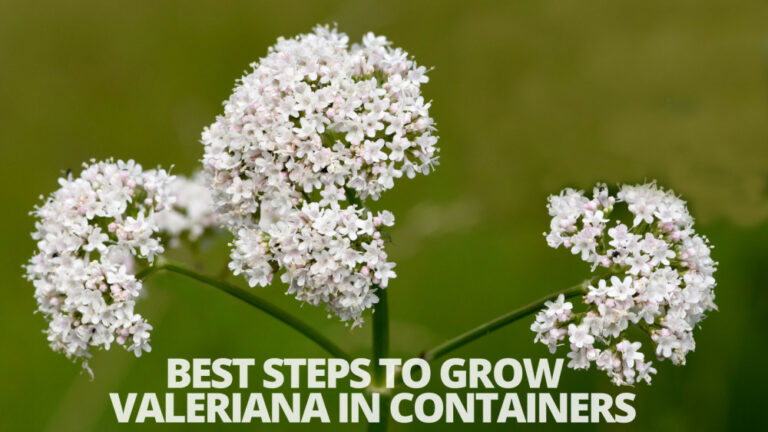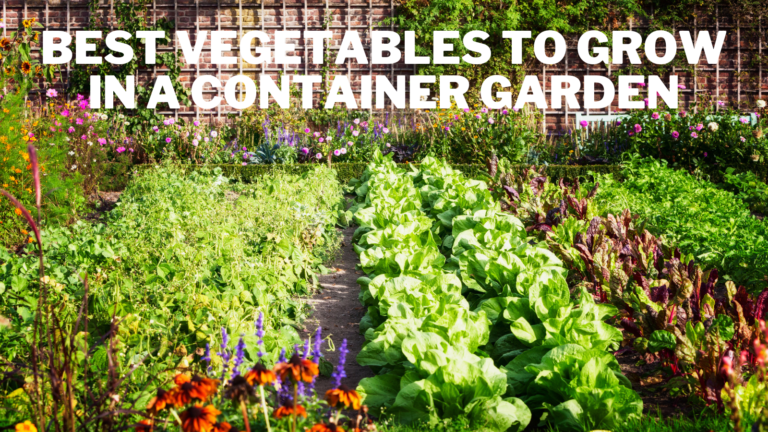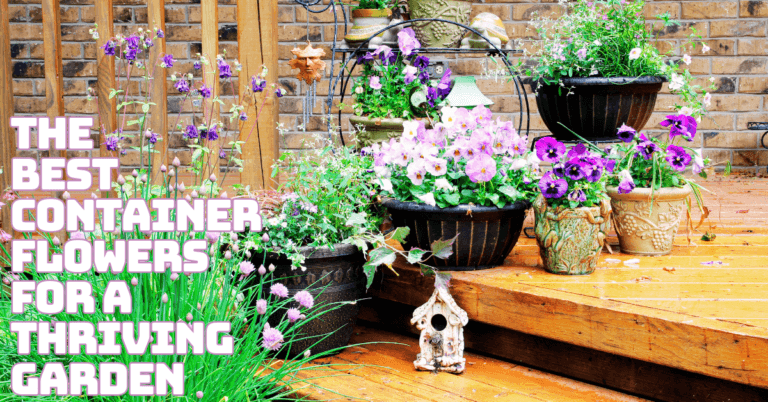Easy Steps To Grow Swiss Cheese Plants In A Container
Easy Steps To Grow Swiss Cheese Plants In A Container
Tropical ornamental Monstera, also known as the Swiss cheese plant, has aerial roots that extend downward from the stem.
Once they do, the roots spread out quickly, allowing the plant to grow like a vine. The big, heart-shaped leaves of the Swiss cheese plant, which develop holes over time that resemble Swiss cheese, give the plant its name.
This article will help you perfectly grow Swiss cheese plants in a container.
History Of Swiss Cheese Plants
The Latin name of this stunning plant is Monstera Deliciosa, as you have no doubt guessed. Still, it also goes by many other names, including Cheese Plant, Swiss Cheese Plant, Fruit Salad Plant, Mexican Breadfruit, Ceriman, Custard Plant, and Split-Leaf Philodendron.
Due to the Swiss cheese's resemblance to the Monstera's unique holey leaves, you already know that his most well-known monikers are the Cheese and Swiss Cheese plants. The Swiss Cheese Plant has a long history in Central and South America.
This green beauty was first mentioned in 1693, and throughout the following centuries, it spread worldwide, with documented occurrences in Mexico and Guatemala.
It was a major hit in Europe by the middle of the 19th century as our plant-loving, trend-setting ancestors saw its tremendous potential. They quickly began cultivating it as it gained popularity. We appreciate them for that!
Flowering plants of the Alismatales, Arrowhead, and Pondweed orders are members of the monocotyledon (monocot) group, whose species only have one seed leaf.
The majority of the 4,500 species are aquatic and thrive in marshes and other freshwater and marine ecosystems, where they are classified as weeds that obstruct irrigation and transportation. They grow submerged or partially exposed to the air.
These herbaceous (nonwoody) plants support shorelines and provide significant fish habitats despite having minimal economic significance.
In particular, they promote vegetational succession by building intricate communities with other aquatic and emergent streambank plants.
For example, a pond may fill up with plant debris and silt to turn into a biological landfill, eventually feeding land plants. Several kinds are frequently employed as decorative aquarium plants.
Types Of Swiss Cheese Plants
Only a small number of the monstera genus' almost 50 species are offered by neighbourhood plant nurseries and stores.
While some species, cultivars, and variegated variations are becoming increasingly popular, others remain scarce and costly.
Check out the list below for some of the most popular and more difficult-to-find, enthusiast-only monstera possibilities to make a statement with one in your house.
Ideally, you should know the best varieties to grow cheese plants in a container that will fit your climate.
1. Monstera Deliciosa
The Monstera deliciosa is the most frequently found in Instagrammable designer homes since it is the most widely available and well-known monstera species.
This exotic-looking plant is straightforward to cultivate indoors and has huge foliage with remarkable fenestration.
With its upward vining, pattern and aerial roots grow well against a pole or trellis. Individual leaves can reach a maximum length of three feet.
When planted outside at the appropriate temperature, you may notice creamy blossoms and tasty, luscious fruit that draws bees and other creatures to your yard.
2. Monstera Acuminata
If you're fortunate to encounter this unusual species, it's fantastic for small, cramped apartments or trailing over hanging baskets.
Although it has a similar appearance to Monstera adansonii, its foliage and height are more condensed.
3. Swiss Cheese Plant
This monstera species, often known as the Swiss cheese or monkey mask plant, is second in availability and popularity to the Monstera deliciosa.
Even though it's a little smaller, it can still grow indoors to heights of up to 8 feet and has a climbing, quickly developing growth habit that can benefit from periodic trimming.
Given its widespread name, the Swiss cheese plant's spectacular leaf fenestration upon maturity should be no surprise.
4. Monstera Dubia
The shingle plant species of the lesser-known variegated monstera features tiny heart-shaped leaves.
Because of the plant's vining tendency, the leaves are positioned close to whatever its stems are leaning against.
Even though it can grow in low light, strong, indirect light produces more attractive variegation.
One species you'll likely only encounter at a higher cost from specialized vendors is this one. Homegrown plants will likely remain in their solid juvenile stage, even when mature plants have fenestration.
5. Monstera Peru
You won't have to worry about it being difficult to maintain or taking up a lot of space if you can get your hands on this unusual climbing species.
This little member of the genus develops fast and enthusiastically in the right circumstances.
However, Peru doesn't produce fenestrations on its leaves like many other Monstera species. Despite this, the dense foliage is glossy dark green with striking deep ridges.
6. Monstera Obliqua
The oblique, one of the rarest monstera species, is occasionally called the unicorn plant.
It possesses extreme fenestration when mature, and the holes can take up as much as 90% of the leaf surface.
They are incredibly delicate and challenging to locate in the wild due to their wafer-thin nature.
Even with the most outstanding specialists, it's unlikely that you'll locate this plant; if you do, it may cost a substantial sum. Nevertheless, it's good to dream for the most ardent species fans.
Grow Swiss Cheese Plants In A Container
The vast, heart-shaped leaves of the Swiss cheese plant (Monstera adansonii), which have holes as the plant ages, give the plant its common name (in a process called fenestration). The leaves resemble Swiss cheese as a result.
The Swiss cheese plant, a tropical perennial native to Central and South America, is often grown indoors.
Monstera adansonii has a rapid growth rate and a vining habit similar to its cousin Monstera deliciosa, often known as the Swiss cheese plant.
But if grown indoors in a container, it will stay at a manageable size. Swiss cheese plants can be potted anytime and are commonly grown from young nursery plants when grown as indoor plants.
It's crucial to remember that Monstera plants have all parts. It's vital to remember that Monstera plants are poisonous to pets in all sections, so take caution when growing them indoors.
Container Requirements
A Swiss cheese plant can grow in any container as long as it has drainage holes. Beautiful in hanging baskets are these plants.
Choose a pot for your nursery plant that is just a little bigger than the root ball. Monstera enjoys being crammed within its containers. Regardless of the size of the pot, they will grow enormous.
Your monstera won't grow significantly or faster if you put it in a big pot; most likely, all the extra damp soil will cause root rot, or your monstera will focus more energy on growing roots than leaves.
Additionally, you can use a porous material, such as terracotta, which can aid in the soil's ability to dry up a little bit more quickly and thereby help to prevent overwatering or root rot. The type of soil is not particularly important to monstera plants.
You can make your free-draining potting mix or purchase one online or from a retailer. Monsteras require a pot that isn't too big and has drainage holes to drain any extra water.
Finding the best potting soil can be daunting, and considering blending your own can be much more perplexing.
Soil To Grow Swiss Cheese Plants in a Container
Peat-based potting soil works best for Swiss cheese plants since it helps to retain moisture in the soil without making it soggy.
Aim for a soil pH between 5.5 and 7 for robust development. Swiss cheese plants prefer moist, nutrient-rich, loamy soil, yet they may survive somewhat sandy soil.
Perlite can be added to regular potting soil to promote drainage and prevent root rot.
Because it is a tropical jungle plant, the Swiss cheese plant needs rich, nutrient-dense soil that retains moisture without becoming soggy. Peat moss is a fantastic addition to typical, high-quality potting soil.
Advanced Monstera soil mix's formula is 3:3:3:1:1. Which is made up of three parts bark, three parts pumice, three parts coir, one part charcoal, and one part worm castings. Using the same size scoop for each component makes it simple to follow a ratio formula.
Simply add the necessary number of scoops to your mixture after that. The best potting soil for monstera plants is one that retains moisture but also drains appropriately.
They favour a soil mixture with a pH between 5.5 and 6.5, which is slightly acidic. For Monsteras, a mixture of 1 part peat moss/coco coir, 1 part perlite, and 4 parts fine pine bark works well.
A premium potting mix is an excellent place to start, but a cacti/succulent mix or chunky orchid mix works excellently to help drainage. Monstera flourishes in a well-draining potting mix.
Sunlight To Grow Swiss Cheese Plants In A Container
Monstera adansonii needs sunlight to survive because it is a tropical plant but does best in direct, intense light.
Since it is accustomed to prospering under the shade of giant trees in the jungle, bright sunlight can easily cause the foliage to burn.
Limit exposure to just two or three hours in the morning sun if you can't prevent it.
The Swiss cheese plant naturally grows beneath the shade of big trees. It favours diffused light or lightly filtered by a sheer curtain.
It will require some direct sunlight for a short period each day. Low-maintenance plants include Swiss cheese plants.
The most important thing to remember is to give them enough light—ideally, in a bright area away from direct sunlight.
Additionally, avoid overwatering; the soil should remain on the dry side.
In conclusion, brilliant indirect light is bright enough to read by and create a shadow, though not a dark, distinct one.
It can be found a few feet away from the south- or west-facing windows that are not sheltered and close to windows that face north and east.
Although they cannot survive direct sunshine, monsters require intense light. Although they can survive in low light, they won't develop either.
You must give your Monstera plant adequate light to develop a spectacular Monstera plant with the lacy leaves and the hue you admire.
Water To Grow Swiss Cheese Plants In A Container
These plants prefer constant moisture but not soaking wetness. Before watering your Swiss cheese plant, insert your finger approximately an inch deep into the ground.
It's time to water the plant if the soil feels almost completely dry until a small amount of water escapes the container's drainage openings.
When watering your plants, use filtered water at room temperature or leave the water out overnight to allow chemicals like chlorine to evaporate.
Always examine the soil before adding extra water because you might need to water your plants less in the winter.
When watering a Swiss cheese plant, ensure the water drains out the bottom of the pot. Wait until the top several inches feel dry before watering (no plant enjoys wet feet!).
Overwatering is a standard error with this plant, so avoid doing it. Monstera deliciosa prefers a little bit of dryness in the soil.
With occasional irrigation, they thrive. If you're potting it yourself, water it correctly the first time, then wait a few weeks before watering it again. Do this for the next roughly every two weeks.
Rainwater, distilled water, or tap water can all be used. In this way, the Monstera Deliciosa is not particularly sensitive.
As previously indicated, tap water is also good, although it contains some salts that may be detrimental to plants generally and may cause salt accumulation over time.
Temperature & Humidity
These tropical plants prefer warm temperatures and high humidity levels to grow. The more accurately you reproduce the plant's native environment, the better.
Keep your plant away from drafts, and make sure it is constantly kept in a location above 40 degrees Fahrenheit.
The ideal humidity is greater than 50%. This plant does nicely in a cozy bathroom with plenty of light. If necessary, spritz the plant or use a humidifier in the area where it is located to boost humidity.
Propagating
Taking cuttings from a Swiss cheese plant is simple. Choose a stem in the spring or early summer stem with an aerial root starting to grow further down. Look for a white or brown bud next to a leaf.
This will serve as the new roots. Cut an inch below the aerial root with a sharp knife or secateurs.
Ensure the aerial root is immersed before placing the stem in a clear, deep container with a few inches of water.
Place in a well-lit area away from the sun and replace the water every few days. Within a week or two, new roots should begin to emerge.
The cutting should have developed a good bundle of new roots about four inches long after six weeks.
You can now put the new plant in a pot filled with fresh, all-purpose, or house plant compost. Wate it, allowing any extra to drain.
You will need a toothpick, a sharp knife or another cutting tool, a sheet of clear plastic (such as a plastic sandwich bag or a piece of plastic cling wrap), twine or strong string, and an optional rooting hormone to propagate your monstera using this method.
- Determine the location you want the roots of your new plant to grow by looking at the slender stem of your monstera. Choose a location where leaf growth starts at least six inches below the ground.
- Make a precise upward, diagonal cut through the stem at the chosen location, about one-third of the way through, using a clean, sharp blade.
- To maintain the cut's opening during rooting, insert a toothpick sideways into the wound. The newly sliced surface of the stem can now be treated with rooting hormone to hasten the process, although new roots can still form without it.
- Wrap a generous amount of moistened sphagnum moss using the twine around the stem's cut. The new roots will have a place to grow as a result.
- Tie the plastic sheet to the ball to keep the moisture inside the sphagnum moss ball.
- Maintain ordinary care for your monstera. Within a few months, you ought to be able to see new roots poking through the moss.
Transplanting
The most typical technique to acquire your first monstera is this way. Even better, you can get one at Fast Growing Trees in a three-gallon pot nine inches tall. If you kill your plant (accidentally! ), it even comes with a one-year warranty.
If you want to purchase a starting plant, you have two options: transplant it into a new container or leave it in its container (if the container has drainage holes, good potting soil, and isn't pot-bound).
Prepare the container first, then move your new monstera. A small amount of general-purpose potting soil should be added to the container's bottom.
The plant must have enough at the base to sit at its previous height. Pull the entire plant out of the plastic container it was shipped in by the stem while squeezing the sides.
Remove some soil by gently loosening the roots. The intention is to help the plant stretch out while also getting rid of the old soil and replacing it with new.
It should be placed in the prepared container and then filled with potting soil. Soak it thoroughly.
How To Grow
A plant that doesn't require much time must be loved. That's how Swiss cheese plants are. They're excellent if you want to let them be for a bit.
They do not require constant moisture. Only add water when the soil's top inch or two dries. Although they are happiest in bright, indirect light, they can manage a little shade.
You can also put them somewhere where they will get a few hours of sunlight daily. However, you will need to move them to the brighter position over weeks by progressively exposing them to more light each day in increments of around 15 minutes until they are seated in direct sunlight for up to an hour.
You can raise the humidity level by placing the plant close to other plants or using a humidifier. These plants favour humidity levels of 40%.
But don't worry about it; other plants may drop their leaves or turn brown if the air is too dry, but your monstera won't suffer unless the air is too dry.
Your monstera will thrive if you maintain your home's average temperature between 60 and 80 °F. If temperatures fall below 50°F, be careful. You might want to inspect your pipes for freezing if it occurs.
Re-pot And Cut Back A Swiss Cheese Plant
Figuring out how to report and prune back a Swiss cheese plant is not too tricky. Re-pot the Swiss cheese plant by increasing the size of the pot and using a rich potting soil comprised of compost and peat to aid drainage and aeration.
Remember to slightly loosen the roots while repotting them before setting them into a new container. These plants need assistance because they are top-heavy.
This is a beautiful time to cultivate the Swiss cheese plant on a moss pole. Put the moss pole into the plant's pot.
Use twine or pantyhose to attach the stems to the pole loosely. Make careful to spray the moss pole often.
Make careful to spray the moss pole often. Water the Swiss cheese vine plant well after repotting. The Swiss cheese vine plant should be controlled by cutting it back because it can grow out of control.
When growing a Swiss cheese plant on a moss pole, pruning should be done whenever the plant seems too tall or when the aerial roots become challenging to manage.
Fertilizing
Wait at least four to six months before fertilizing a plant that has been potted (or repotted), as potting soil frequently contains slow-release fertilizer.
After that, feed your Swiss cheese plant with a half-diluted, all-purpose liquid fertilizer once a month.
Typically, a 20-20-20 liquid fertilizer will be ideal for an entire foliage-type plant like the Monstera to reach optimum health. This harmonious combination of the primary three promotes robust, healthy growth.
This houseplant requires basic dietary requirements to grow healthy, lush leaves. It should be treated regularly with a balanced houseplant fertilizer, such as an NPK ratio of 6-12-6, to encourage deep leaf colour and robust development during its fast-growing seasons (spring and summer).
Finding a liquid 20-20-20 fertilizer is the first and most common option. When diluted in a gallon of water, use roughly half a teaspoon of that.
Replace a regular watering session with that, and apply it directly to the soil. When you're finished, empty any extra liquid into the plant's tray.
Make sure to let all of the water run off after that. Wintertime plants require less watering, especially if kept in a relaxed environment. In the spring and summer, feed the plant monthly with a house plant food.
Conclusion
Swiss cheese plants don't require much effort, especially for dramatic statement plants. They will repay you with large, glossy, fenestrated leaves that draw attention in any space with little maintenance.
If you encounter issues, please don't hesitate to return and let us know about them in the comments. We hope to be of assistance!
I trust you enjoyed this article on the Easy Steps To Grow Swiss Cheese Plants In A Container. Please stay tuned for more blog posts to come shortly. Take care!
JeannetteZ
>>>Please click here to read my all-inclusive article about Container Gardening<<<
>>>Are you interested in homegrown herbs and medicine? Please click here to find out more about it!<<<
Your Opinion Is Important To Me
Thoughts? Ideas? Questions? I would love to hear from you. Please leave me your questions, experience, and remarks about this article on the Easy Steps To Grow Swiss Cheese Plants In A Container in the comments section below. You can also reach me by email at Jeannette@Close-To-Nature.org.
Disclosure
This post may contain affiliate links. As an Amazon Associate and other affiliate programs, I earn from qualifying purchases at no extra cost to you. Read my full affiliate disclosure.
You might also enjoy these blog posts:
Steps To Grow Fiddle Leaf Figs In A Container
Easy Steps To Grow Lavender In A Container
Easy Steps To Grow Ferns In A Container
Easy Steps To Grow Calendula In A Container
Easy Steps To Grow Kava In A Container

